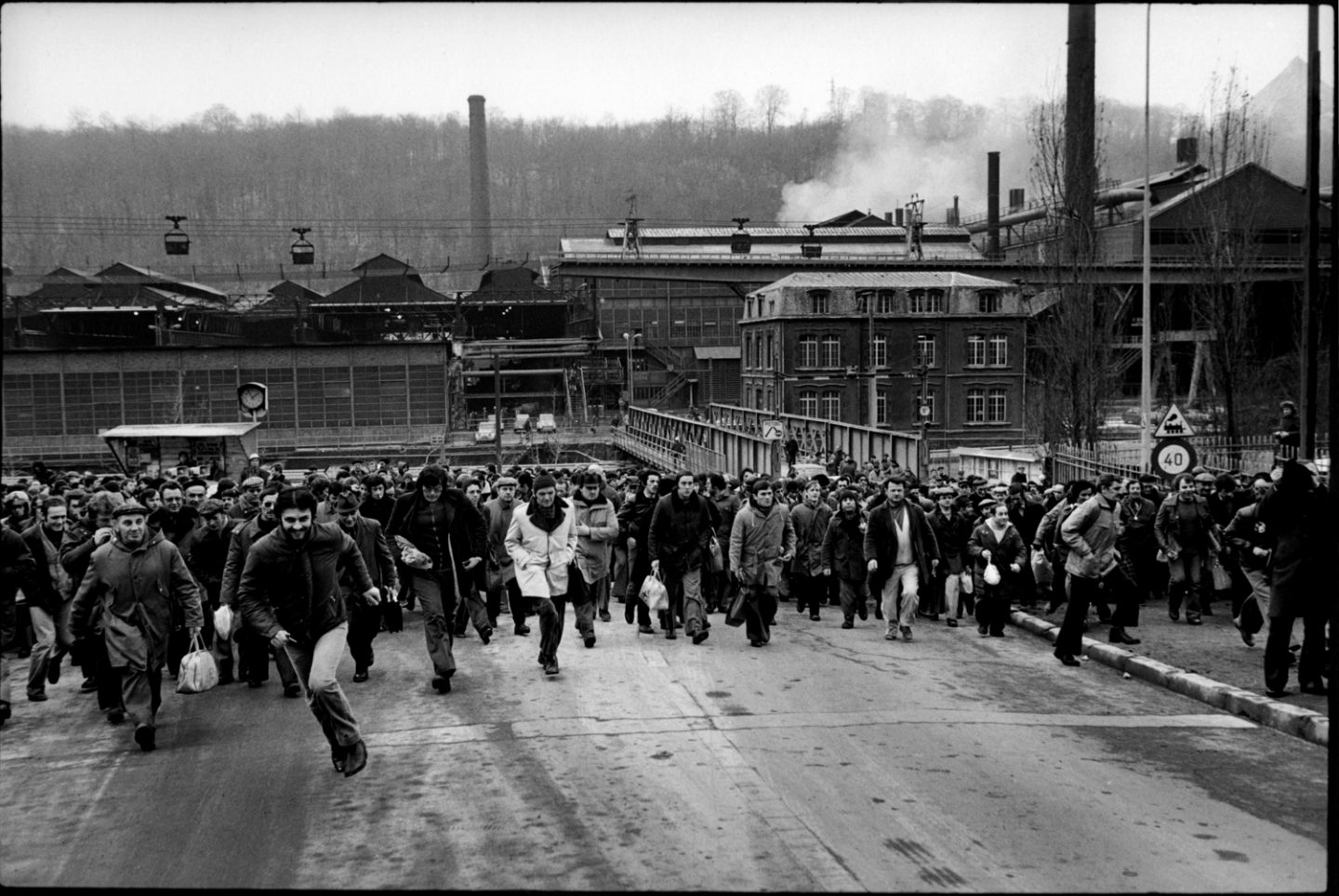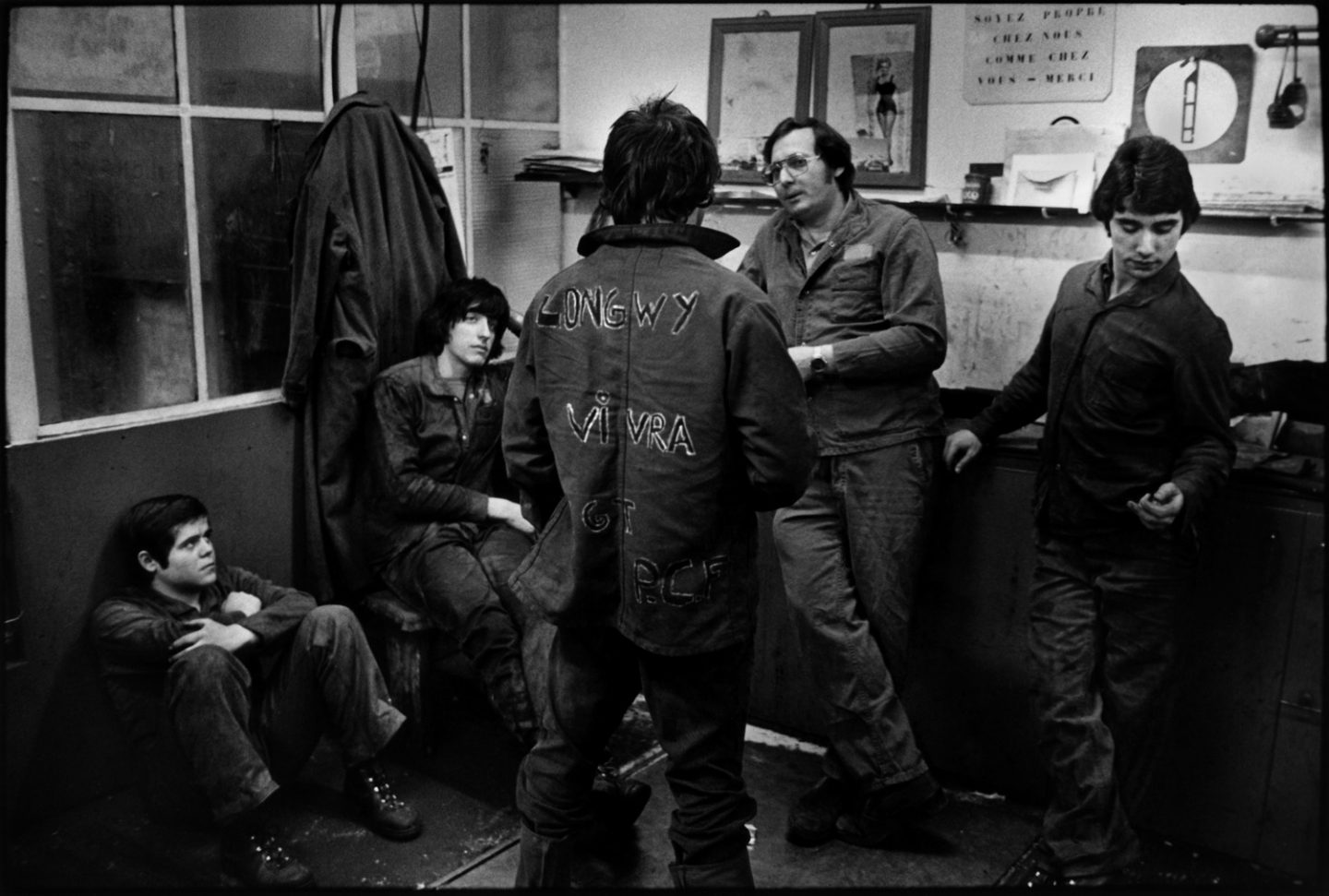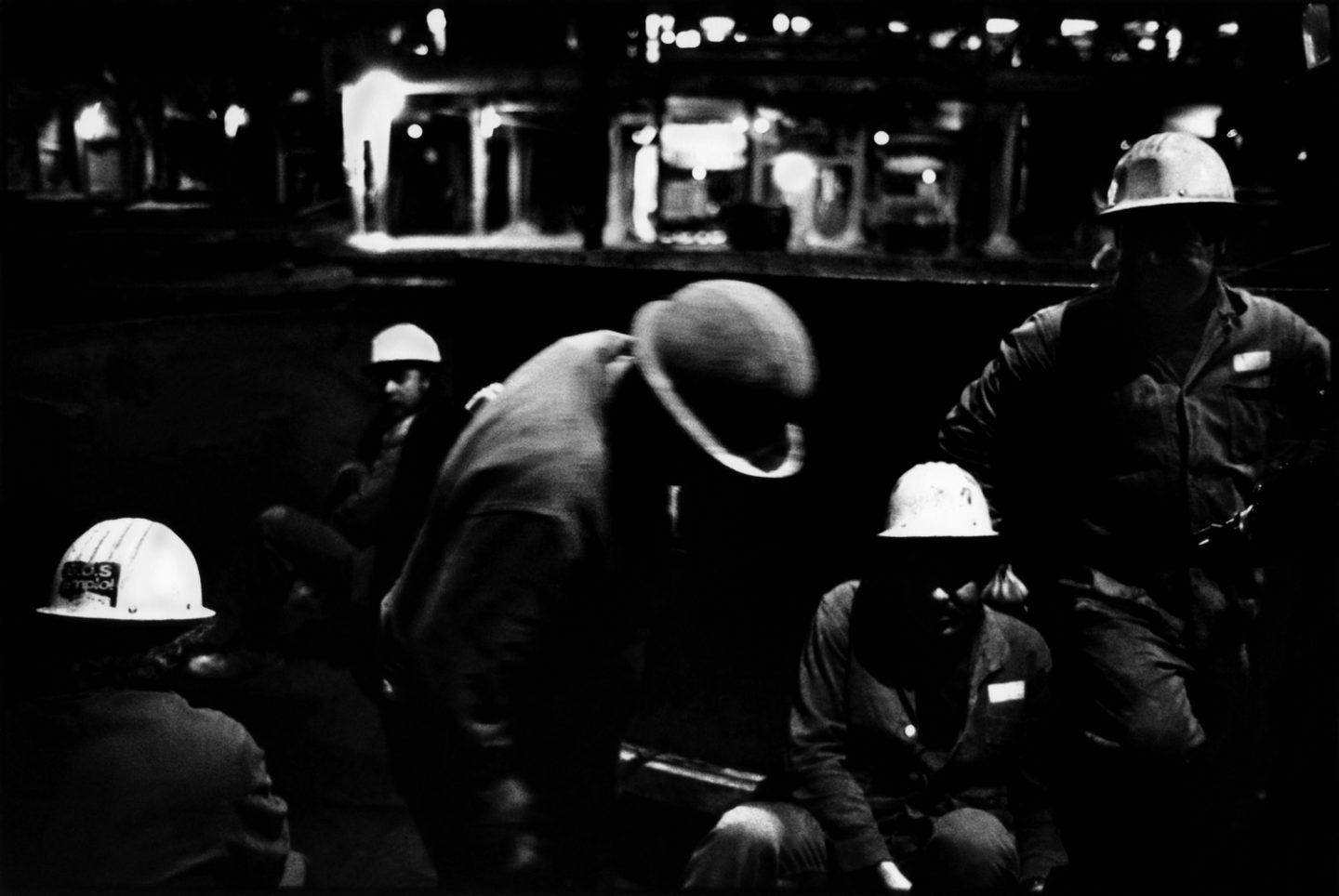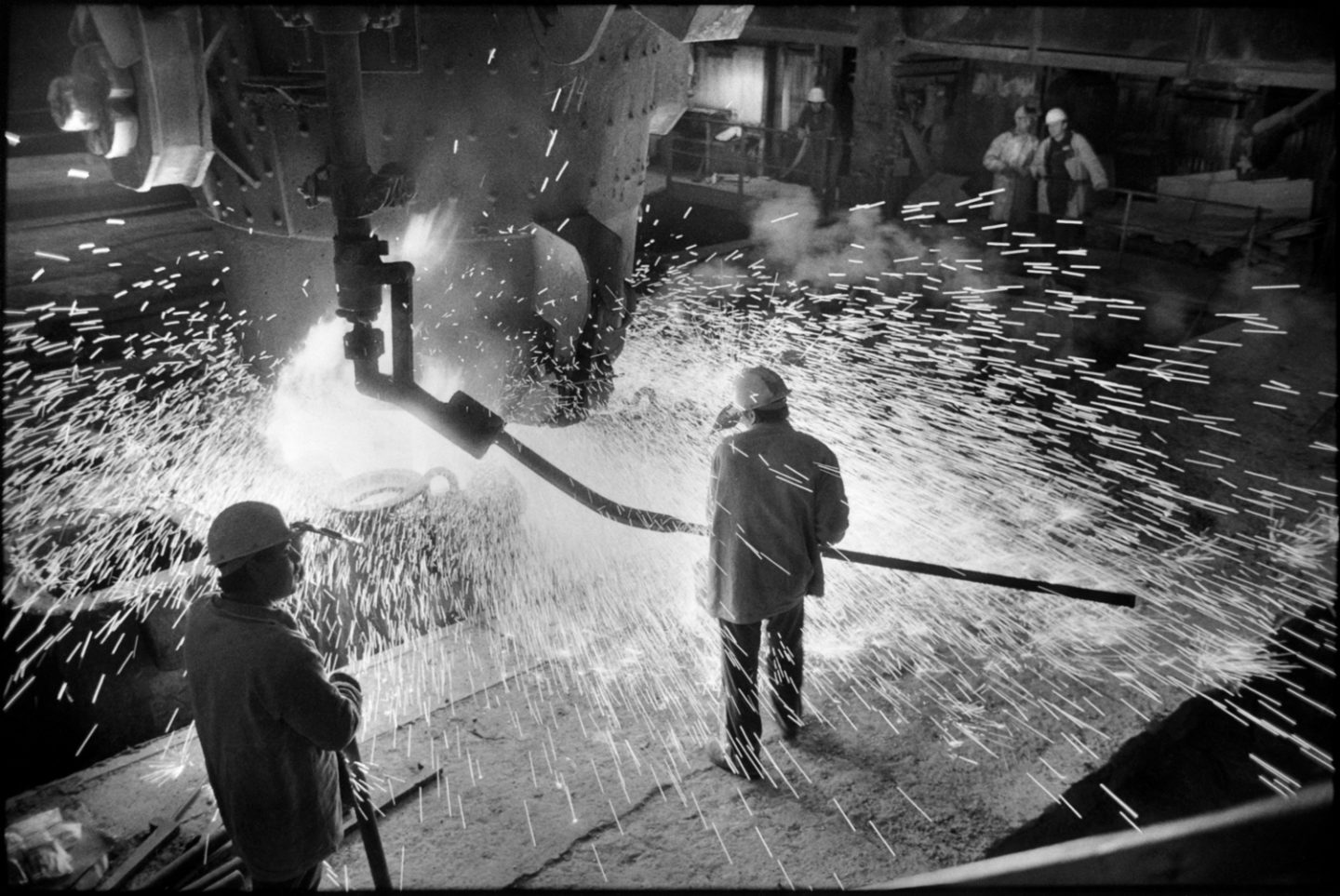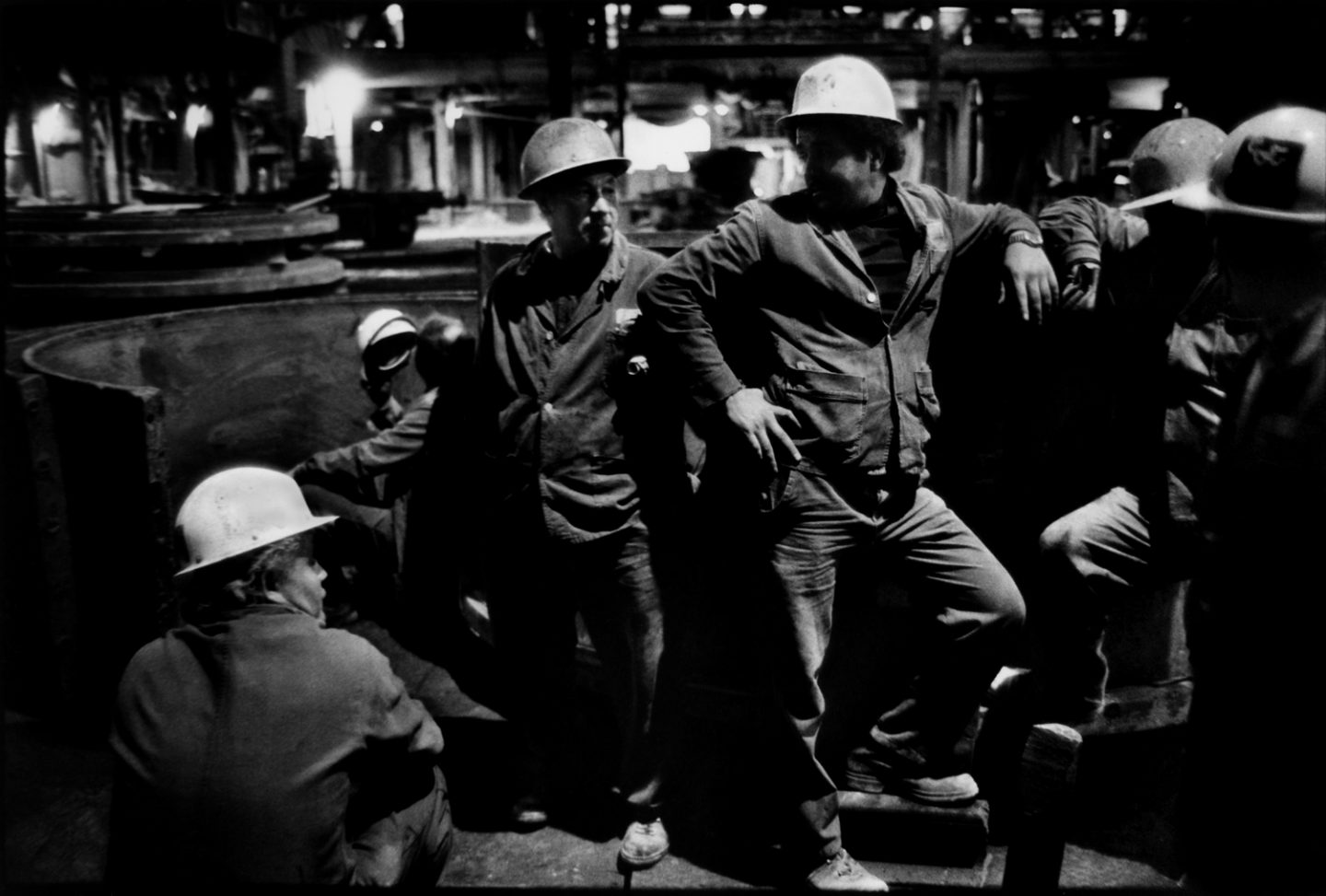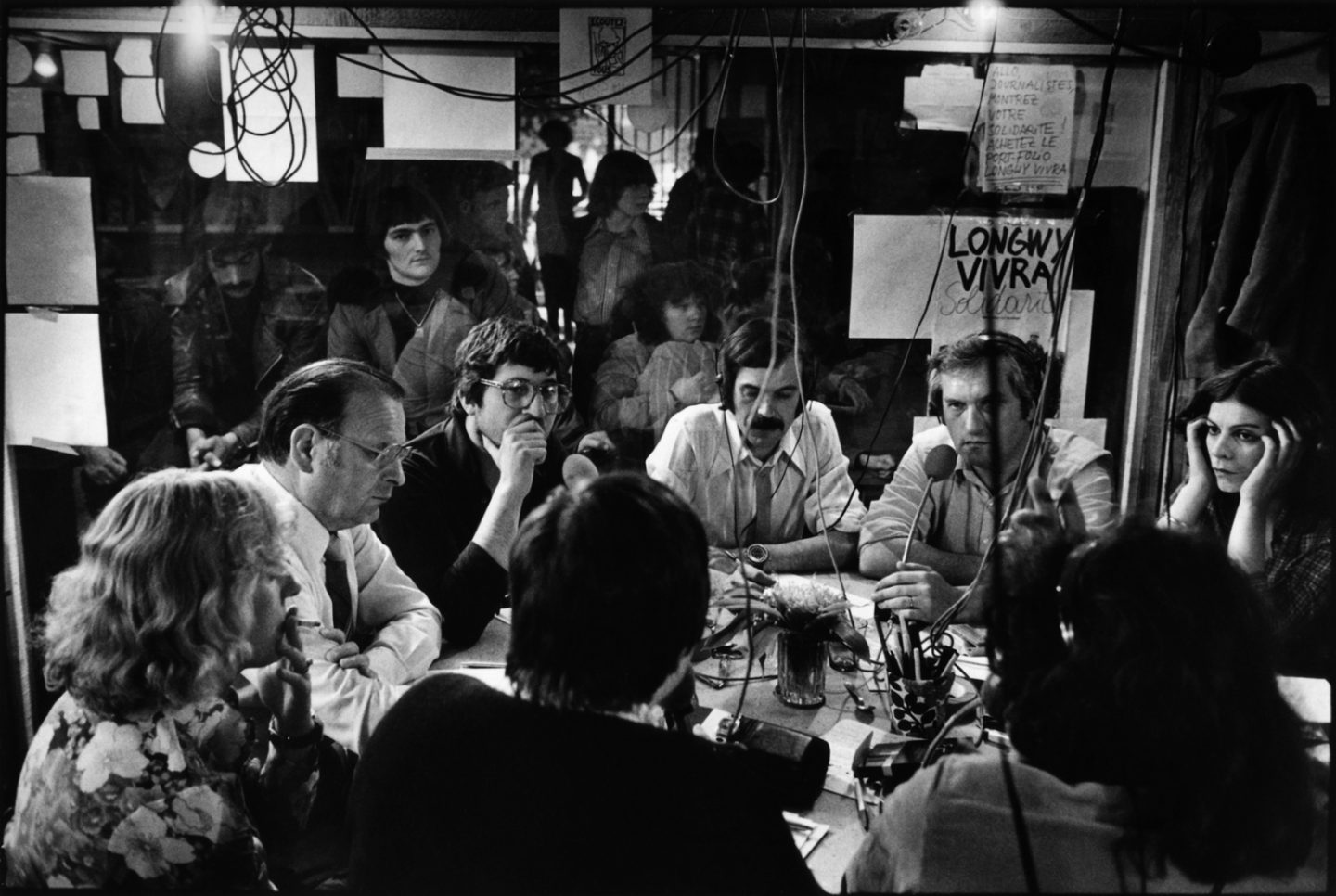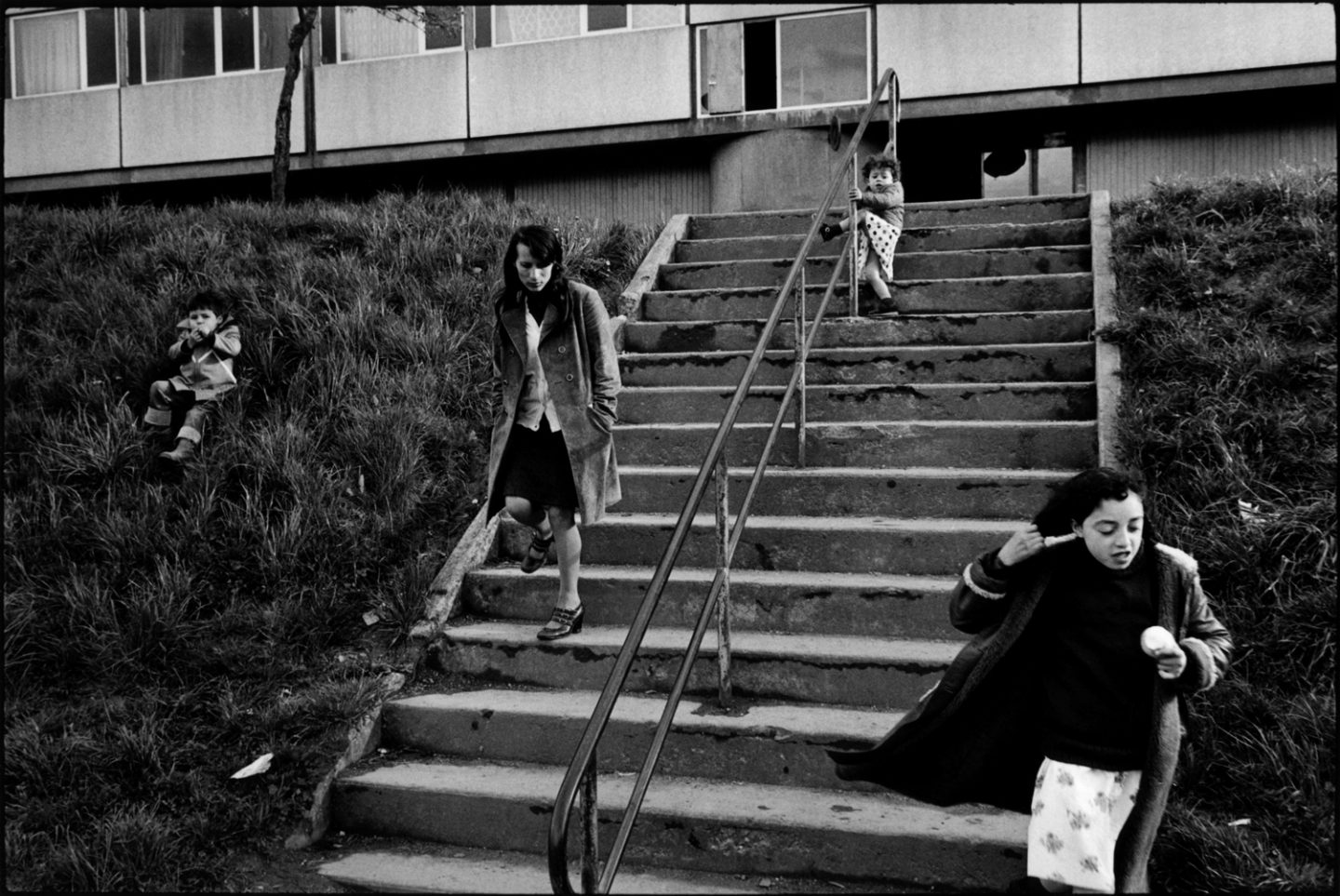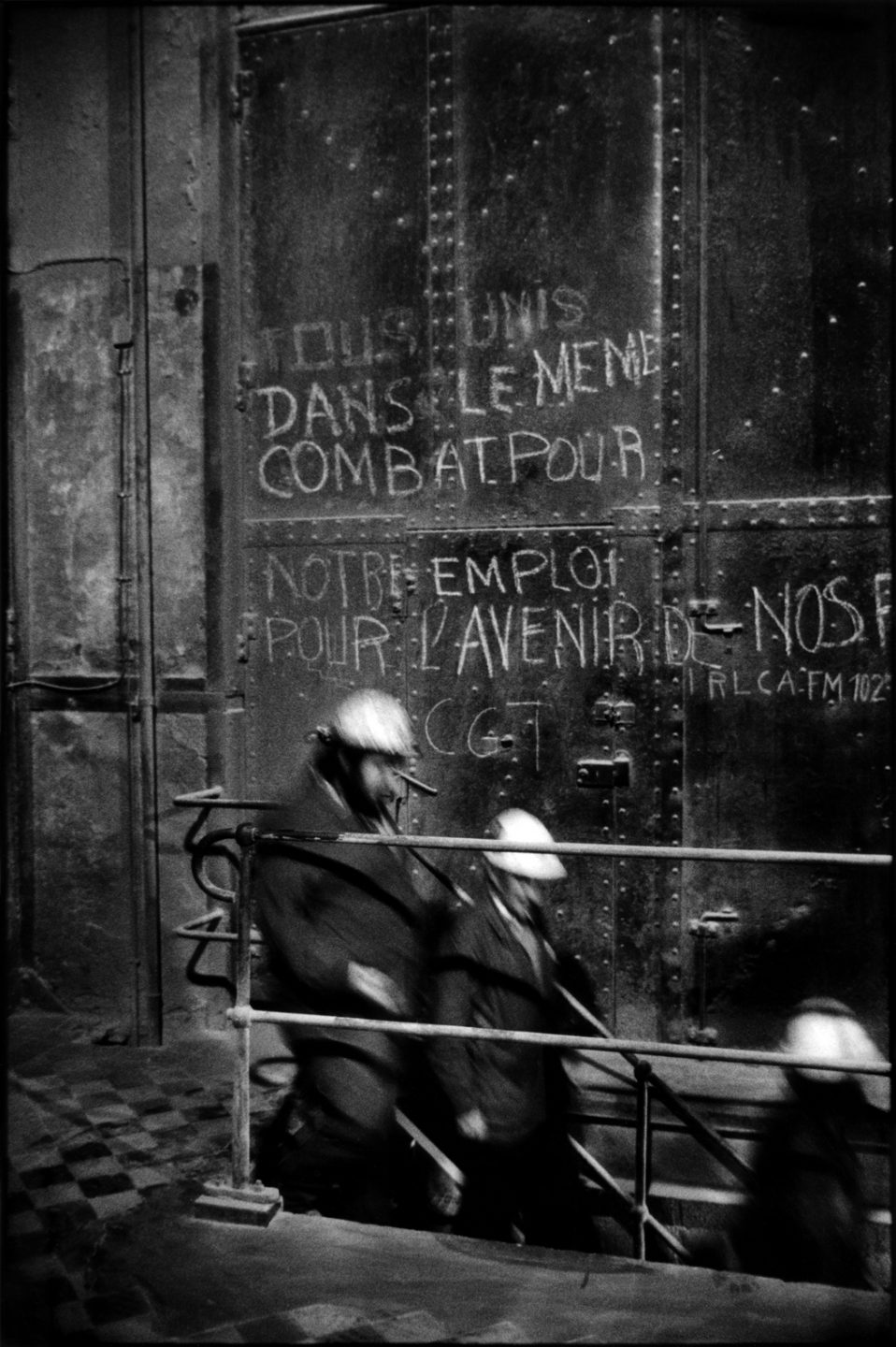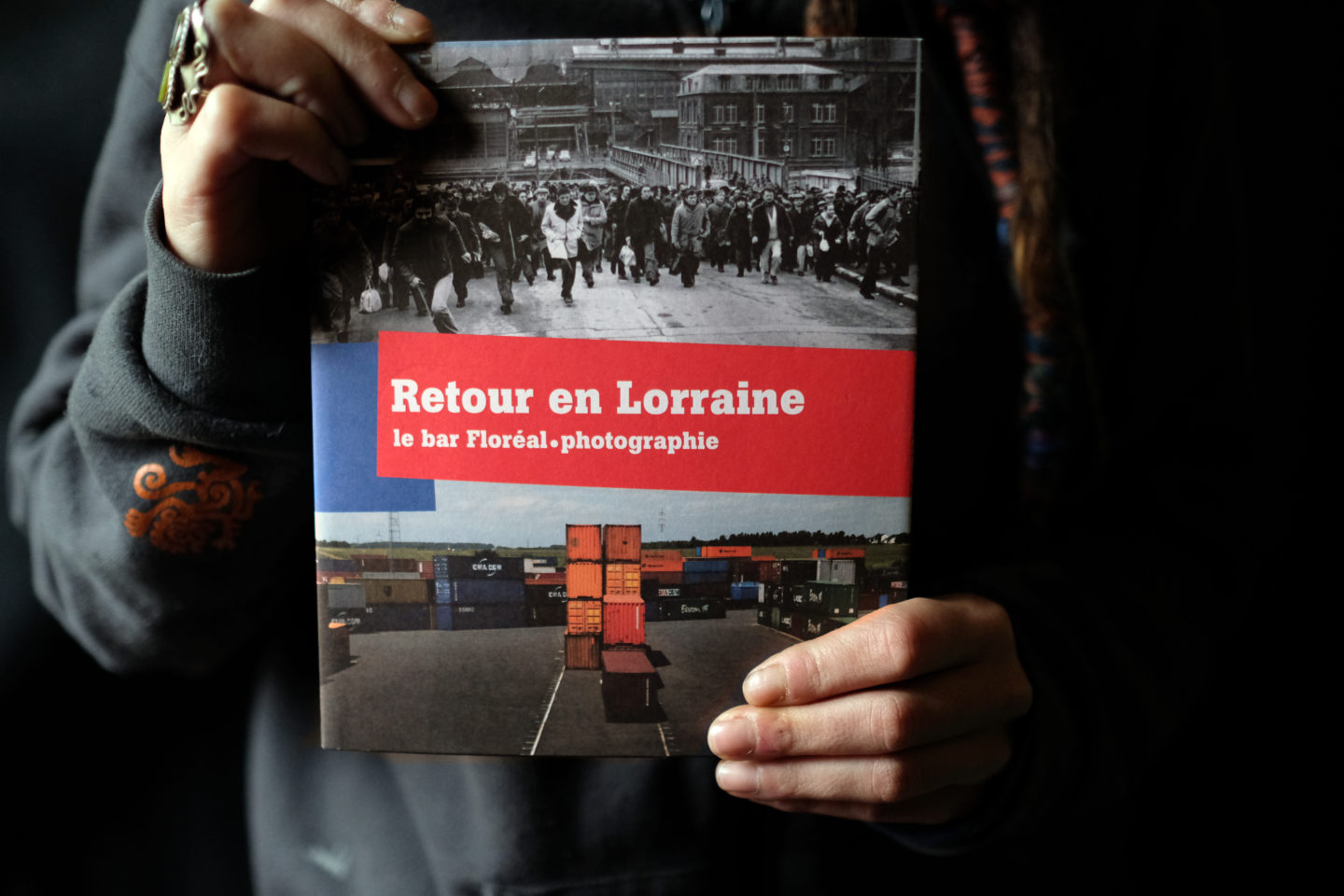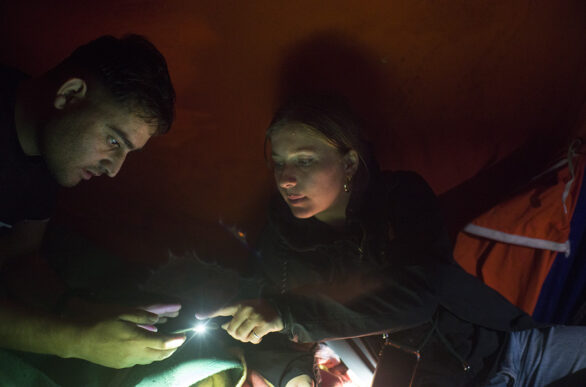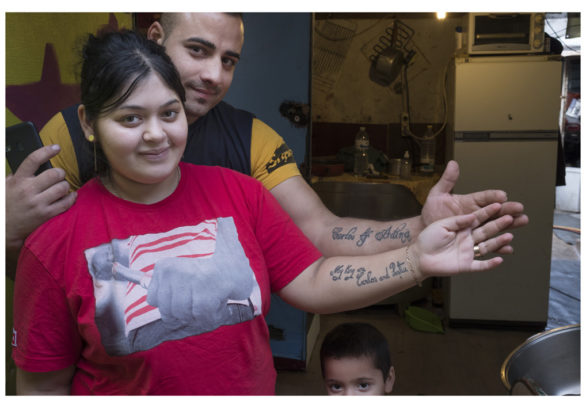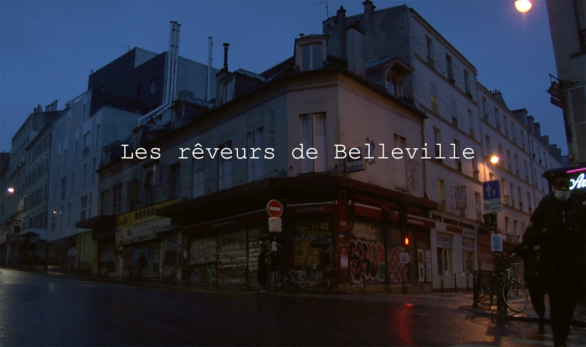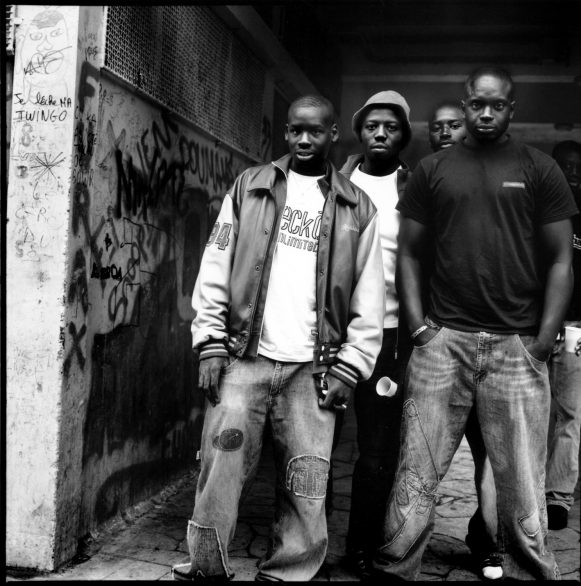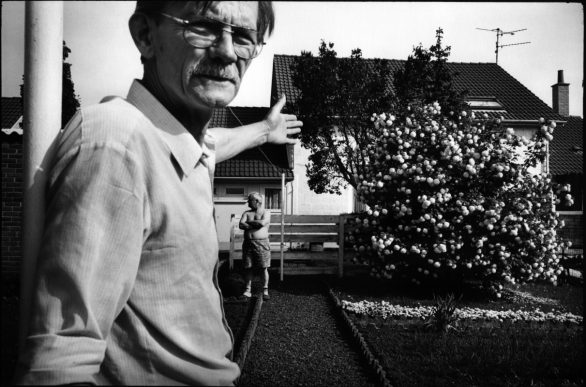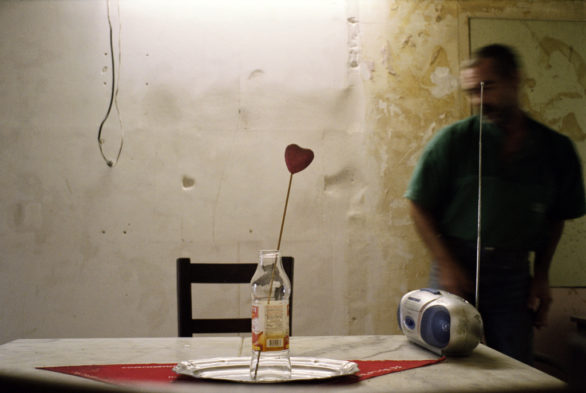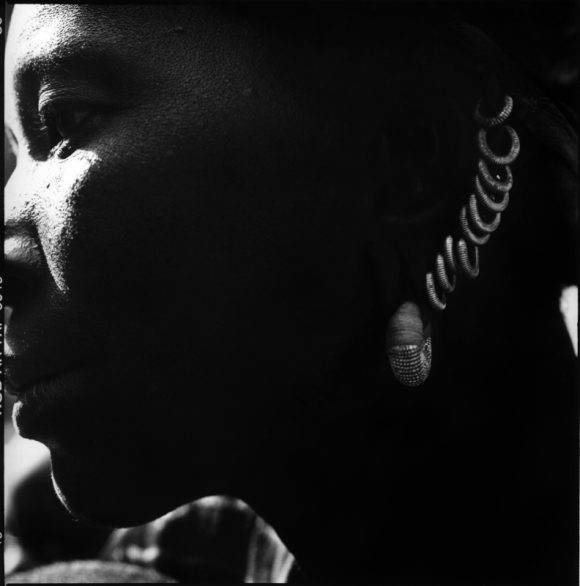En 1979, un voyage en Lorraine à l’occasion des luttes pour la sauvegarde de la sidérurgie, la rencontre avec Alex Jordan, photographe et graphiste, membre du groupe Grapus (nous créerons ensemble, avec Noak, le bar Floréal, en 1985),
Longwy, le Pays Haut, Lorraine cœur d’acier, la radio libre, les luttes, la résistance.
En 2008, à l’occasion du Mois de la Photo à Paris, je propose aux 10 photographes qui constituent le collectif de revenir en Lorraine.
Une exposition à la Maison des Métallos et dans notre Galerie du bar Floréal,
un livre aux éditions Trans Photographic Press.
In 1979, a trip to Lorraine on the occasion of the struggles to save the steel industry, the meeting with Alex Jordan, photographer and graphic designer, member of the group Grapus (we will create together, with Noak, the bar Floréal, in 1985), Longwy, the Pays Haut, Lorraine cœur d’acier, the free radio, the struggles, the resistance. In 2008, on the occasion of the Month of the Photo in Paris, I propose to the 10 photographers who constitute the collective to return to Lorraine, with an exhibition at the Maison des Métallos and in our Gallery of the bar Floréal, a book published by Trans Photographic Press.
Retour en Lorraine. 1979-2008.
En 1979, je vais à Longwy, photographier les luttes pour la sauvegarde de la sidérurgie Lorraine, Les aciéries crachent leurs fumées, les travailleurs se mobilisent contre leur fermeture . J’y rencontre Alex Jordan, photographe et graphiste, membre de Grapus, avec lequel nous allons quelques années plus tard, en 1985, fonder le bar Floréal.
Une radio libre est créée Lorraine cœur d’Acier, (les radios libres » sont interdites à cette époque), Son studio, « ouvert » à tous, il suffit de pousser la porte, est installé dans le hall de la mairie de Longwy-haut, et son antenne, longtemps recherchée par les gendarmes, est elle installée au sommet du clocher de l’église, juste à côté de la mairie.
Lorraine cœur d’Acier devient le cœur et la voix de cette lutte.
Cette lutte n’a pas été gagnée.
Aujourd’hui, toutes les usines ont disparu, plus de fumées à chaque coulée d’acier, les hauts fourneaux ont été détruits, celui de Thionville, qui venait tout juste d’être construit et était un des plus modernes d’Europe, a été démonté.
À l’emplacement de l’usine Usinor d’Herserange, ville voisine de Longwy, le long de la vallée de la Moulaine, s’étend aujourd’hui un golf, et dans la vallée voisine de la Chiers, une fois les aciéries détruites, on a construit le plus grand centre commercial d’Europe, le Pôle Européen.
Et chaque jour, 20 000 personnes vont travailler au Luxembourg.
En 2008, 30 ans plus tard, pour une exposition à l’occasion du Mois de la Photo à Paris, je suis retourné sur les lieux accompagné de mes collègues photographes du groupe « le bar Floréal » que j’avais fondé avec Alex Jordan (lui aussi était présent en 79 en Lorraine, membre du groupe de graphiste « Grapus », il y réalisa un portfolio photographique « Longwy vivra » vendu au profit des grévistes).
En 2017, une partie est présentée dans l’exposition « Paysages Français » à la BNF François Mitterrand et rejoint la collection de la BNF.
In 1979, I went to Longwy to photograph the struggles to save the Lorraine steel industry. There I met Alex Jordan, photographer and graphic designer, member of Grapus, with whom we were to found the Floréal bar a few years later, in 1985. A free radio is created Lorraine cœur d’Acier, (free radios are forbidden at this time), Its studio, « opened » to all, it is enough to push the door, is installed in the hall of the town hall of Longwy-haut, and its antenna, a long time sought by the gendarmes, is installed at the top of the bell-tower of the church, just beside the town hall. Lorraine cœur d’Acier became the heart and voice of this struggle, which was not won. Today, all the factories have disappeared, there is no more smoke at each steel pouring, the blast furnaces have been destroyed, the one in Thionville, which had just been built and was one of the most modern in Europe, has been dismantled. On the site of the Usinor plant in Herserange, a town next to Longwy, along the Moulaine valley, a golf course now stretches, and in the neighboring Chiers valley, after the steelworks had been destroyed, Europe’s largest shopping mall, the Pôle Européen, was built, and every day 20,000 people go to work in Luxembourg. In 2008, 30 years later, for an exhibition on the occasion of the Month of Photography in Paris, I returned to the site accompanied by my fellow photographers of the group « le bar Floréal » that I had founded with Alex Jordan (he was also present in 79 in Lorraine, a member of the group of graphic designer « Grapus », he made a photographic portfolio « Longwy vivra » sold for the benefit of strikers). In 2017, a part is presented in the exhibition « Paysages Français » at the BNF François Mitterrand and joined the collection of the BNF.
2008, Paysages mélangés.
Les photographies, toujours une mémoire du monde qui change.
2008, Mixed landscapes. photographs, always a memory of the changing world.
Aux Éditions Trans Photographic Press
En 2009, aux Rencontres d’Arles, le Retour en Lorraine est projeté au cours de la Nuit de l’année.
In 2009, at the Rencontres d’Arles, Retour en Lorraine was screened during the Night of the Year.
Avec les photographies de Bernard Baudin, Jean-Christophe Bardot, Sophie Carlier, Éric Facon, Marc Gibert, Alex Jordan, Olivier Pasquiers, Caroline Pottier, Nicolas Quinette et André Lejarre.
